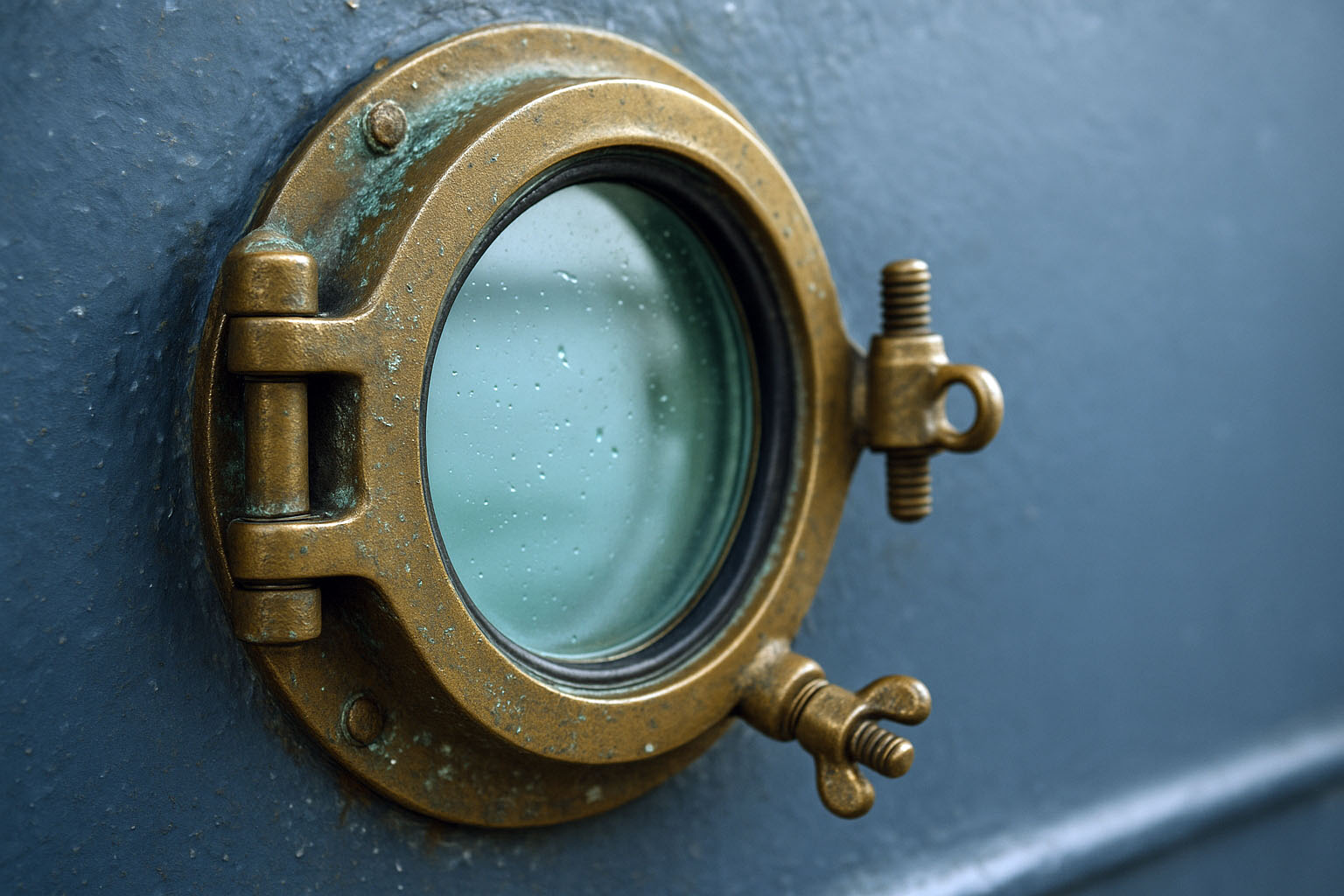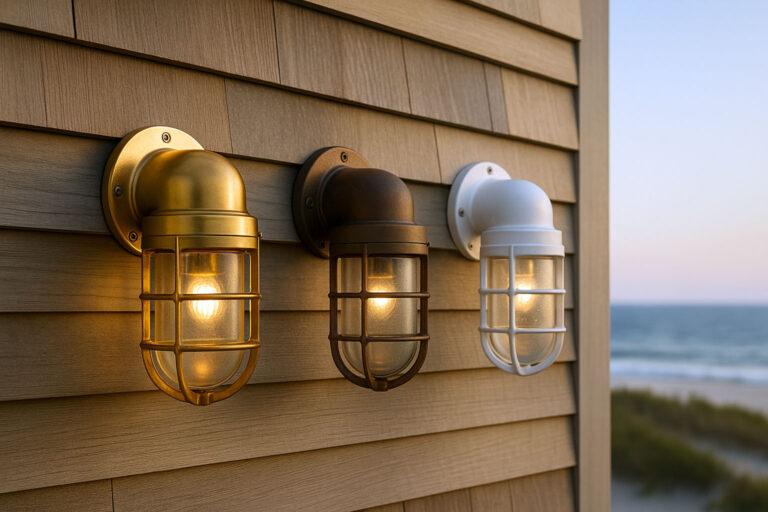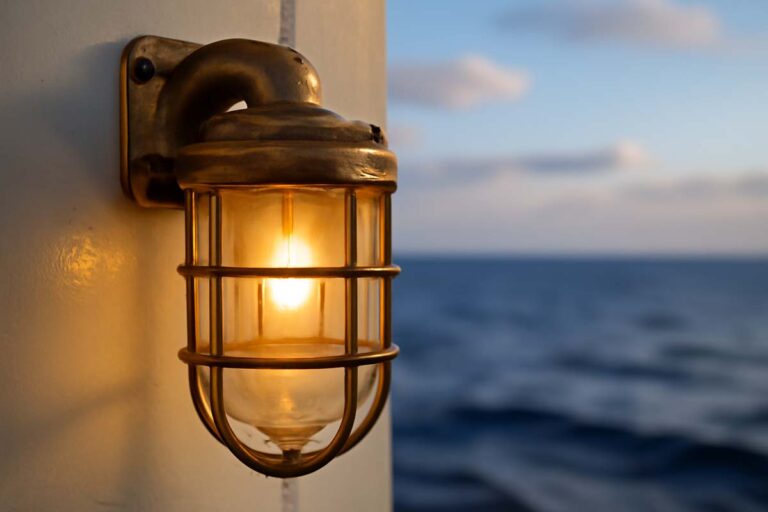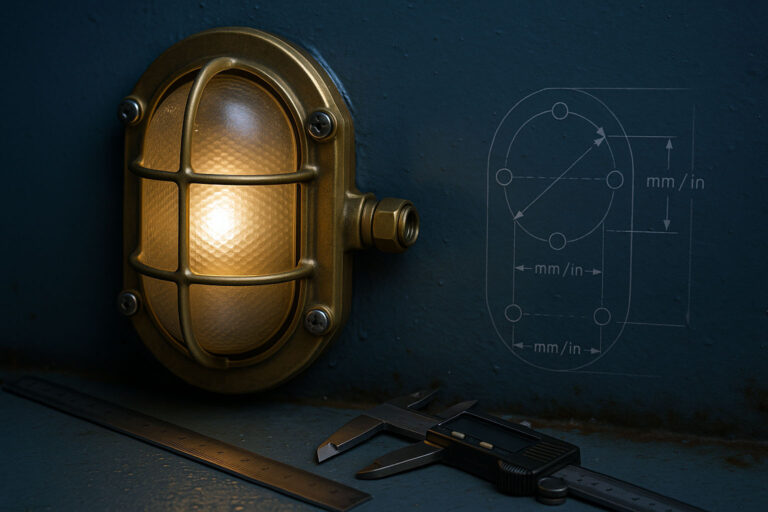Hinge and Dog Types on Portholes: Identification Guide
Shopping, restoring, or cataloging old portholes? The quickest way to tell what you’ve got is to read the hinge and the dogs—the parts that let the port open and clamp shut. This guide shows you how to identify the common types, what each one says about age and grade, and what matters for safety, value, and installation. We’ll keep it hands-on: what to look for, why it’s there, benefits and drawbacks, and step-by-step checks you can do at the bench. Whether you’re a weekend restorer or buying wholesale for projects, this will help you label and price with confidence. Fast.
What we’re talking about: hinges, dogs, and deadlights
On ships, a round window in the hull is a porthole (also called a side scuttle). It usually has a hinged glass frame that opens, and, on heavier units, an additional metal cover called a deadlight that bolts over the glass for storms or blackout. The parts that hold things together: the hinge carries the swinging frame, and the dogs are the clamps that secure it closed. Dogs can be threaded, cammed, or levered; their job is to pull the frame tight against a gasket for a watertight or weathertight seal. Those basics line up with how classification and naval references describe side scuttles and deadlights.
Why hinge and dog types matter
Why care about hinge and dog types? Because they signal duty rating, leak risk, and authenticity. Heavy-duty ports—often with inside deadlights—live lower in the ship or on weather decks and are built to take higher pressure; lighter ports sit higher and may open easily for ventilation. The hinge style tells you how the leaf carries weight and how the glass frame lifts; the dog mechanism tells you how fast you can clamp and how evenly pressure spreads. For buyers, these details affect price, restoration effort, and whether a port is suitable for a head, galley, or a decorative wall. Class rules also dictate where deadlights are required.
Common hinge styles (how to spot them)
Lift-off hinge: Look for a vertical pin on the fixed ring and a slot on the opening frame. When opened past ninety degrees, the frame can lift off for service. Fast to strip for glass changes; downside is pin wear and the chance an unsecured frame could be dropped during removal.
Barrel (butt) hinge: Two or three interleaved knuckles with a solid pin. It looks like a small door hinge. Strong, simple, and common on merchant ships. It stays captive, so you service the frame in place.
Strap hinge: A wide strap leaf across the frame, sometimes with decorative taper. You’ll see this on older bronze and yacht ports. Great bearing area and a classic look, but more exposed metal to polish.
Continuous (piano) hinge: A full-length knuckle along the arc. Rare on round ports but used on rectangular deadlights and some naval patterns where even load is helpful. Excellent alignment; harder to clean.
Offset/raised hinge block: The hinge sits on a little boss that raises the pivot so the frame clears a rubber gasket or a rain ring. If you see a stand-off block, expect heavier duty sealing.
Dog mechanisms (the clamps that secure the port)
Threaded wing dogs: The classic. A threaded stud with a cross or wing handle tightens into a bronze shoe to pull the frame shut. Easy to understand, strong, slow to operate. Look for worn threads and oval holes in the shoes.
Cam dogs (lever cams): A short lever rotates a cam lobe that bears on a strike. Quick to throw, great for frequent use, and usually set with an adjustable eccentric. Needs periodic inspection so the cam still “over-centers” and stays locked.
Toggle dogs: A small over-center toggle link pulls a claw as you snap the lever down. Fast and very secure when set right. If the toggle rivet is sloppy, it won’t lock; check for stretch marks near the pivot.
Handwheel (central wheel) dogs: Instead of several small dogs, one wheel in the center drives a spider or ring that pulls the frame down evenly. You’ll meet this on larger naval or engine-room ports and on rectangular deadlights. Smooth load distribution; more parts to clean and grease.
Wedge or clip dogs: A simple wedge or swing clip tightened by a set screw. Common on light-duty cabin ports and some yacht hardware. Fine for spray; not ideal for pounding seas.
Dog count and placement: Two opposite dogs are common on medium ports; three or four spread load better on big units; a single wheel replaces multiples. Even pressure is what you’re after—uneven dogs crush gaskets and leak.
Step-by-step: identify your hinge and dogs in minutes
- Measure the opening. Record glass visible diameter (ID) and overall flange OD. Write both in millimeters and inches.
- Photograph the hinge close-up from the side. Note if the frame can lift off, or if a solid pin holds it.
- Count the dogs. If there’s a central wheel, note that and the spider/ring style.
- Check how each dog works. Threaded screw? Lever cam? Toggle? Take a picture with the dog half-closed so the mechanism is visible.
- Look for deadlight hardware. An inside metal cover on a hinge usually means a heavier-duty port.
- Note markings. Maker’s logo, casting numbers, class stamps, and fastener thread pitch all help with dating.
- Check gasket seat. Flat or V-groove? A wide, proud seat usually pairs with lever or wheel dogs.
- Inspect wear points. Dog shoes, cam lobes, and hinge pins tell you how hard the port worked.
- Check materials. Bronze/gunmetal feels heavy and golden; steel is magnetic; aluminum is light and silvery.
- Document the fasteners. Count the bolt holes and bolt circle—it matters for refits.
Where you’ll see each type
Heavier, deadlight-equipped ports (often with three or more dogs or a central wheel) usually sit lower in the ship or on exposed decks where regulations ask for stronger construction and a way to shut out seas or light. Lighter opening ports with simple threaded dogs show up higher in accommodation spaces and yachts. Class notes: rules interpret where side scuttles may open, how they’re tested, and when deadlights or storm covers are required; specifics vary by vessel type and freeboard assignment, but the takeaway is simple—below or near the weather deck, expect heavier gear. Classification testing backs those placements and ratings.
Materials and era cues
Bronze (often called gunmetal) dominated pre-1970s accommodation ports; it machines well, resists corrosion, and polishes beautifully. Steel and aluminum became common on workboats and later ships; expect paint over primer, not mirror polish. Cast marks help: foundry letters, naval stock numbers, and class approvals may be stamped on the ring, hinge boss, or deadlight plate. Metric threads and hex hardware often point to European or Asian yards; slotted screws and Whitworth forms hint at older British builds. Thick molded rubber gaskets suggest later refits; early ports used cork or canvas-rubber composites that compress unevenly with age.
Restoration and safety tips
Free stuck hinges with heat and penetrating oil; don’t hammer knuckles. Re-pin loose hinges with bronze, not mild steel. Clean dog threads and chase lightly; never oil gaskets. Replace crazed glass with tempered or laminated marine glass. Assume old paint may contain lead; strip safely and wear protection.







